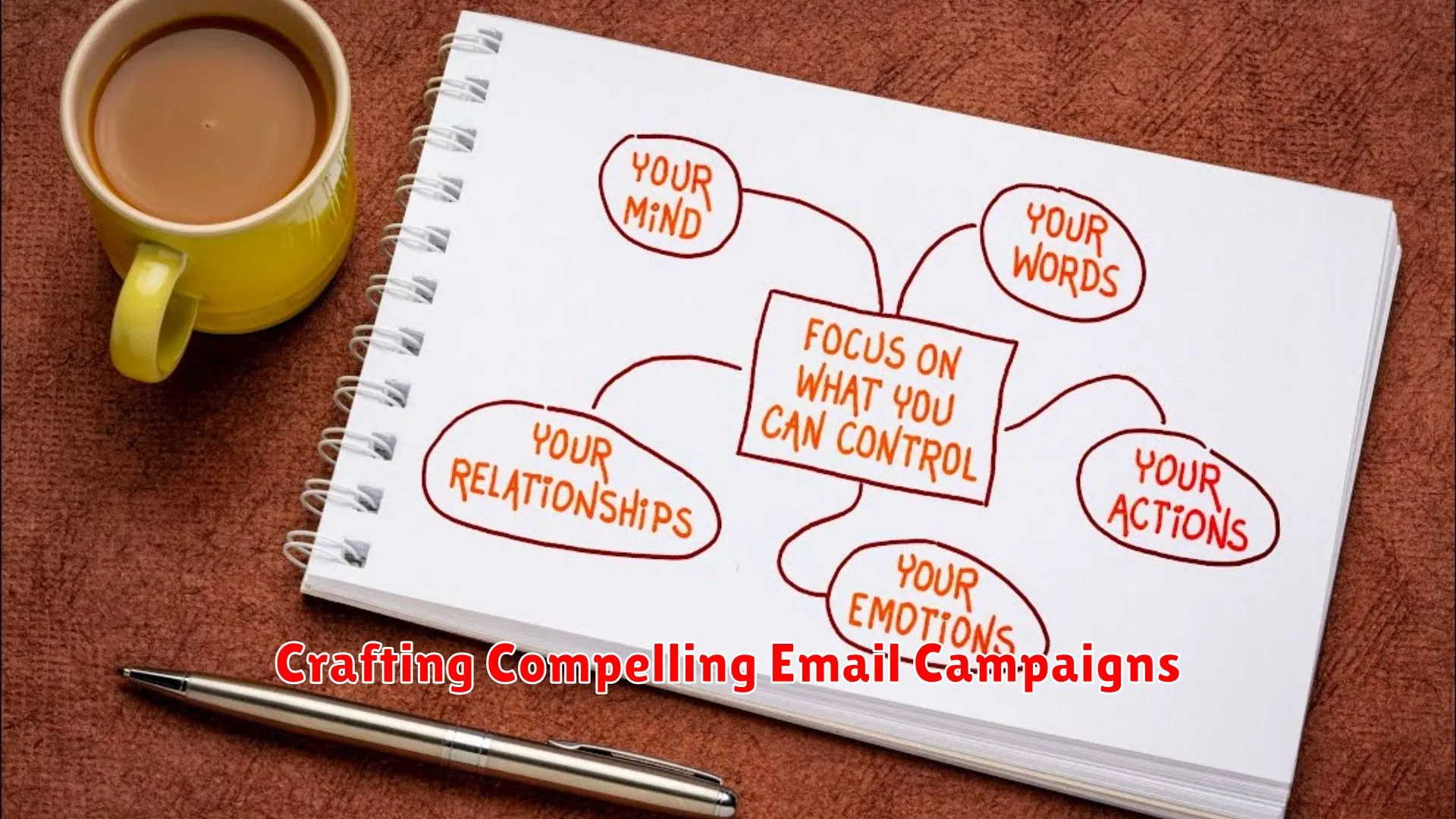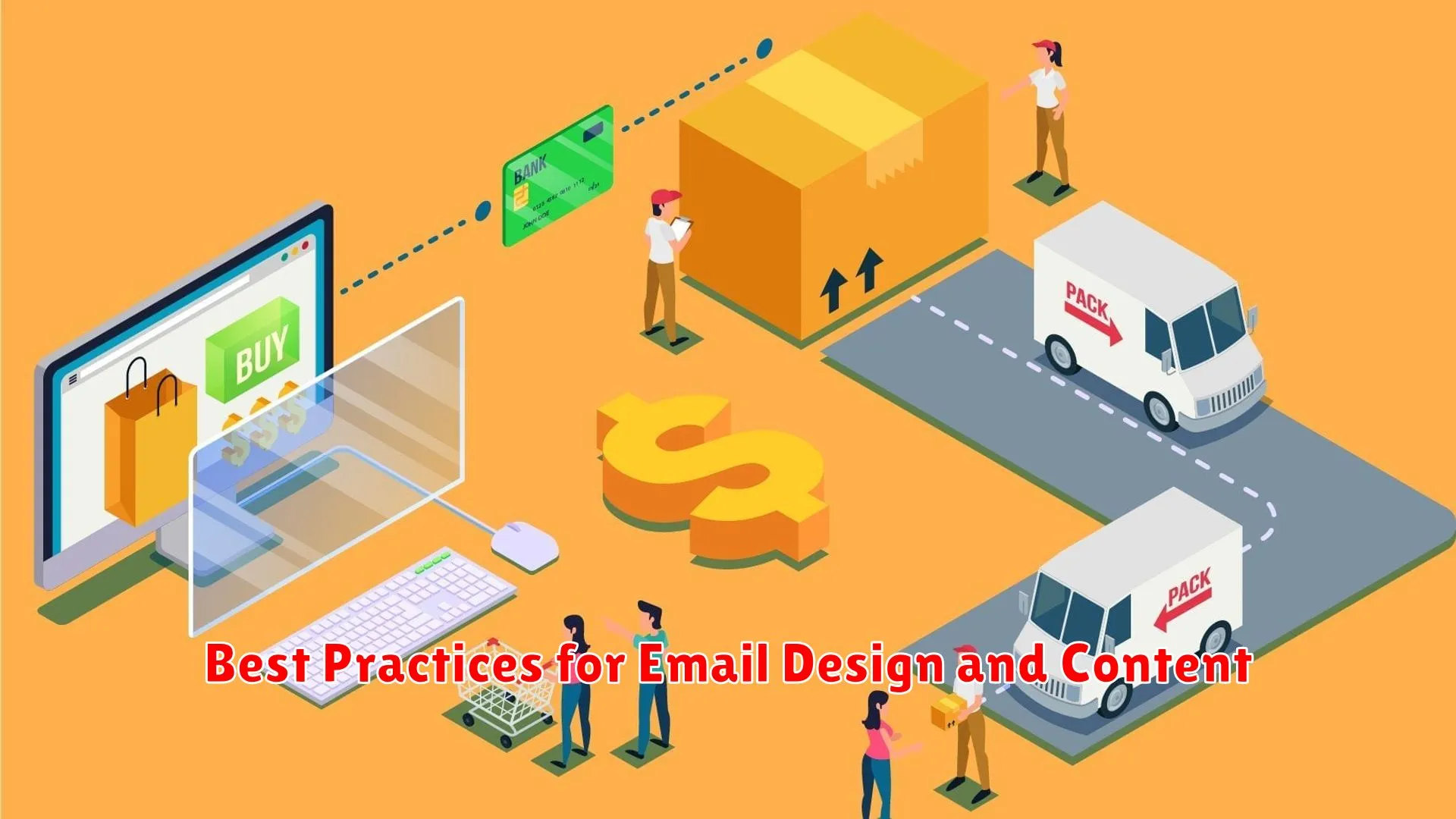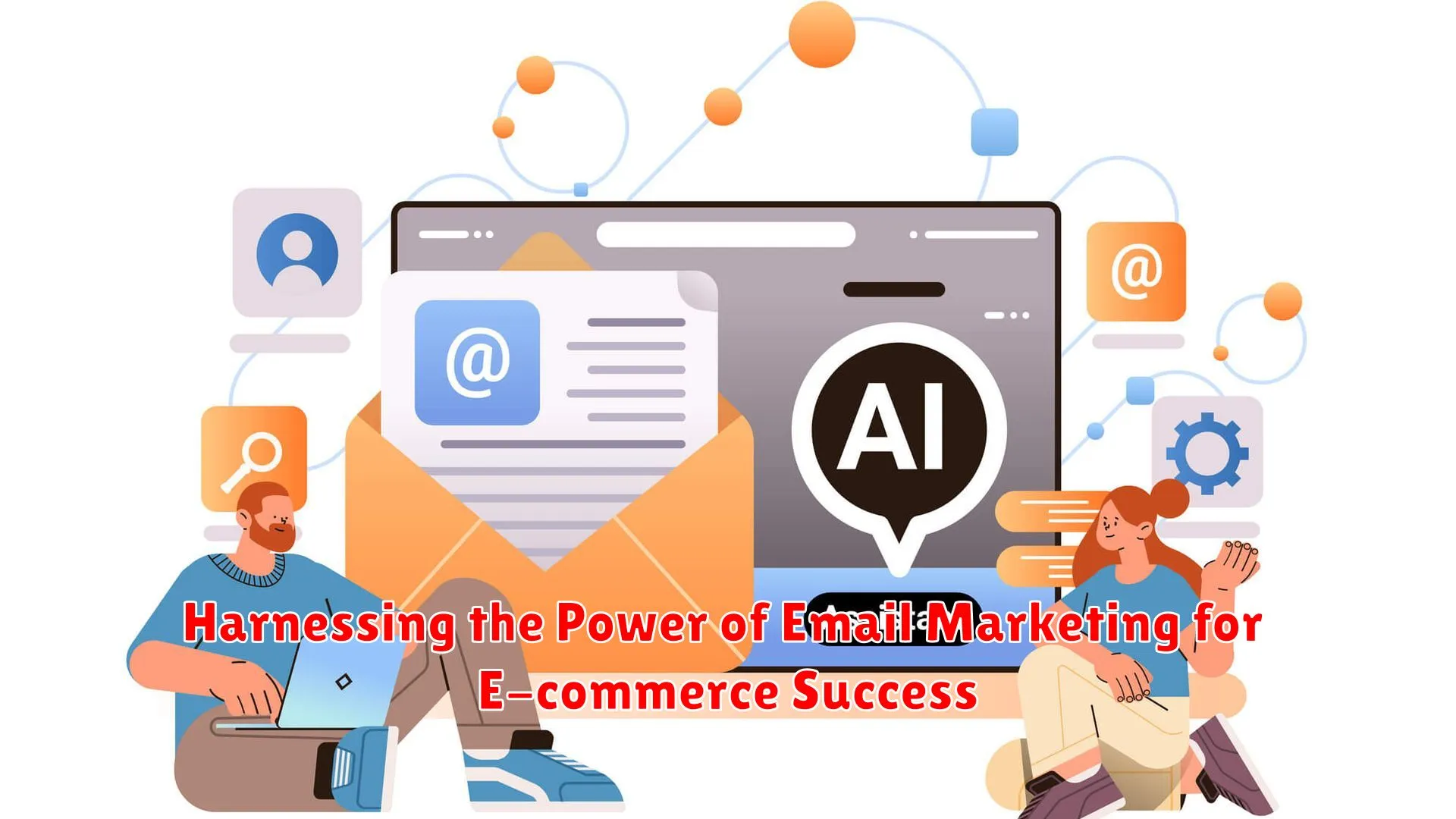Discover how e-commerce businesses can maximize their reach and boost sales by effectively utilizing the power of email marketing. Learn key strategies and best practices to enhance customer engagement and drive conversions.
The Role of Email Marketing in E-commerce

When it comes to driving success in the competitive world of e-commerce, one powerful tool that stands out is email marketing. With its exceptional reach and ability to engage customers, email marketing plays a crucial role in boosting sales, increasing customer retention, and nurturing relationships with your target audience.
One key aspect of email marketing’s impact on e-commerce lies in its effectiveness in reaching a wide audience. Through strategically crafted email campaigns, businesses can directly target their customer base with personalized content, promotions, and product offerings. This targeted approach not only helps in driving traffic to your online store but also in converting leads into loyal customers.
Moreover, email marketing serves as a valuable channel for building brand awareness and credibility in the e-commerce landscape. By consistently delivering relevant and valuable content to subscribers’ inboxes, businesses can establish themselves as authoritative voices in their respective industries, fostering trust and loyalty among their customer base.
Additionally, the role of email marketing in e-commerce extends to driving customer engagement and retention. By sending out tailored recommendations, exclusive offers, and personalized communications, businesses can keep customers informed and interested in their products and services, ultimately leading to repeat purchases and long-term brand loyalty.
Overall, harnessing the power of email marketing is essential for e-commerce success in today’s digital age. By leveraging the unique capabilities of email campaigns to connect with customers, drive sales, and strengthen brand relationships, businesses can achieve sustained growth and profitability in the competitive online marketplace.
Crafting Compelling Email Campaigns

When it comes to e-commerce success, harnessing the power of email marketing can play a pivotal role. Crafting compelling email campaigns is essential for engaging customers, driving sales, and fostering brand loyalty. Here are some key strategies to help you create impactful email campaigns for your e-commerce business:
1. Segment Your Audience
Personalization is key in email marketing. Segment your audience based on factors like purchase history, browsing behavior, and demographics. This allows you to tailor your emails to meet the specific needs and preferences of different customer groups.
2. Use Catchy Subject Lines
The subject line is the first thing recipients see, so make it count. Use strong language, create a sense of urgency, or offer a special incentive to entice readers to open your emails.
3. Engaging Content and Visuals
Ensure your email content is visually appealing and engaging. Incorporate high-quality images, clear call-to-action buttons, and concise copy to keep readers interested and encourage them to take action.
4. Test and Optimize
Don’t be afraid to experiment with different email formats, timing, and content. Use A/B testing to identify what resonates best with your audience and continually optimize your campaigns for better results.
5. Follow Up and Nurture Relationships
After sending out campaigns, follow up with targeted emails to nurture relationships with your customers. Provide valuable content, exclusive offers, and personalized recommendations to keep them engaged and coming back for more.
Segmenting Your Email List for Personalization

Segmenting your email list can significantly enhance the effectiveness of your email marketing strategies for e-commerce success. By dividing your subscribers into smaller, targeted groups based on specific criteria, you can tailor your messages to cater to their preferences and behaviors, increasing engagement and conversion rates.
Demographic Segmentation: One way to segment your email list is through demographic factors such as age, gender, location, or income level. Understanding the demographics of your audience allows you to create personalized content that resonates with their unique characteristics and interests, leading to higher open and click-through rates.
Behavioral Segmentation: Another effective segmentation strategy is based on the behavior of your subscribers. By analyzing their past interactions with your emails, website, or products, you can categorize them into groups such as frequent buyers, inactive subscribers, or potential leads. This allows you to send tailored messages that address their specific needs at each stage of the customer journey.
Interest Segmentation: Understanding the interests and preferences of your subscribers is essential for creating targeted email campaigns. By segmenting your list according to the topics they have shown interest in, you can deliver relevant content, product recommendations, and promotions that are more likely to capture their attention and drive conversions.
Transactional Segmentation: Segmenting your email list based on past purchase behavior and transactional history can help you upsell, cross-sell, and recommend products or services that align with their buying patterns. By sending personalized offers and discounts tailored to their buying habits, you can nurture customer loyalty and increase repeat purchases.
In conclusion,
Automating Email Workflows for Efficiency

When it comes to maximizing the impact of email marketing for e-commerce success, automating email workflows is a game-changer. By setting up automated email campaigns, e-commerce businesses can streamline their communication with customers, drive engagement, and ultimately boost sales.
One key benefit of automating email workflows is the ability to personalize messages at scale. Through segmentation and triggered emails based on customer behavior, businesses can deliver tailored content that resonates with each recipient, leading to higher open and click-through rates.
Key Tips for Automating Email Workflows:
- Segmentation: Divide your email list into targeted segments based on demographics, purchase history, or engagement level to send relevant content.
- Triggered Emails: Set up automated emails triggered by specific actions such as purchases, abandoned carts, or website visits to deliver timely messages.
- Testing and Optimization: Continuously test different elements of your email campaigns, such as subject lines, CTAs, and send times, to optimize performance.
The Impact of Automation on Email Marketing:
By automating repetitive tasks and workflows, e-commerce businesses can save time and resources while maintaining a consistent and targeted communication strategy. This not only increases efficiency but also allows for a more personalized and effective customer experience.
Overall, harnessing the power of automated email workflows is essential for e-commerce businesses looking to scale their marketing efforts, drive customer engagement, and achieve long-term success in the digital landscape.
Measuring the Impact of Email Marketing

Measuring the impact of email marketing is crucial for e-commerce success as it provides valuable insights into the effectiveness of your campaigns and helps in optimizing future strategies. By analyzing key metrics, businesses can better understand how their email efforts are performing and make data-driven decisions to enhance engagement and conversion rates.
One of the primary metrics used to measure the impact of email marketing is open rate, which indicates the percentage of recipients who opened the email. A high open rate signifies that your subject lines are compelling and piquing the interest of subscribers. Monitoring open rates over time can reveal trends and inform adjustments to content and timing.
Click-through rate (CTR) is another important metric that measures the percentage of recipients who clicked on a link within the email. A high CTR demonstrates that your email content is engaging and driving traffic to your website. Tracking CTR helps in identifying which types of content are resonating with your audience.
Conversion rate is a key metric that shows the percentage of email recipients who completed a desired action, such as making a purchase. A high conversion rate indicates that your emails are effectively persuading customers to take the desired next step. Analyzing conversion rates can help in optimizing email content and calls-to-action.
Moreover, ROI (Return on Investment) is an essential metric to measure the overall success and effectiveness of your email marketing campaigns. Calculating the ROI helps in determining the revenue generated compared to the cost of the campaign, providing a clear picture of the campaign’s profitability.
Best Practices for Email Design and Content

When it comes to harnessing the power of email marketing for e-commerce success, the design and content of your emails play a crucial role in engaging your audience and driving conversions. Follow these best practices to make the most of your email campaigns:
1. Personalization is Key
Personalize your emails by addressing recipients by their names and segmenting your audience based on their preferences and behavior. This targeted approach increases relevance and engagement.
2. Mobile-Optimized Design
With the majority of people checking emails on their mobile devices, ensure your email designs are mobile-responsive. Use a single-column layout, clear CTAs, and optimized images for seamless viewing on all devices.
3. Clear and Compelling Content
Create concise and compelling content that grabs attention and conveys your message efficiently. Use captivating subject lines, engaging visuals, and strong calls-to-action to encourage click-throughs.
4. A/B Testing
Regularly conduct A/B tests on different elements of your emails, such as subject lines, content, and design elements. Analyze the results to optimize your campaigns for better performance.
5. Optimize for Deliverability
Ensure your emails reach the inbox by following best practices for deliverability, such as maintaining a clean email list, avoiding spam trigger words, and implementing double opt-ins for subscribers.
6. Monitor and Analyze Performance
Track key metrics like open rates, click-through rates, and conversion rates to gauge the effectiveness of your email campaigns. Use this data to refine your strategies and improve results over time.
Case Studies: E-commerce Brands Excelling in Email Marketing

In the competitive landscape of e-commerce, email marketing has emerged as a powerful tool for businesses to engage with their customers and drive sales. Let’s delve into some case studies of e-commerce brands that have showcased exemplary use of email marketing strategies to achieve success.
1. XYZ Fashion
XYZ Fashion, a leading online clothing retailer, has leveraged personalized email campaigns to connect with their customers on a deeper level. By segmenting their contact list based on preferences and purchase history, they send targeted promotions and product recommendations, resulting in high click-through rates and increased conversions.
2. ABC Home Decor
ABC Home Decor has excelled in creating visually appealing email newsletters that not only showcase their latest collection but also provide helpful home styling tips and DIY ideas to their subscribers. This approach has built a loyal customer base who eagerly anticipates their regular emails, driving repeat purchases and brand advocacy.
3. PQR Electronics
PQR Electronics stands out for their strategic use of automated email workflows. They have implemented abandoned cart emails, welcome series, and post-purchase follow-ups to nurture customer relationships and guide them through the sales funnel. This personalized approach has significantly improved customer retention and lifetime value.
By studying these case studies, e-commerce brands can draw inspiration and insights on how to harness the power of email marketing effectively to drive engagement, boost sales, and foster long-term customer loyalty.
Conclusion: The Future of Email Marketing in E-commerce

Looking ahead, the future of email marketing in e-commerce appears bright and promising. With evolving technology and consumer behavior, businesses need to adapt and innovate their email marketing strategies to stay relevant in the competitive online landscape.
Personalization will continue to play a crucial role in email marketing, allowing e-commerce brands to tailor content based on customer preferences and behaviors. Automated email campaigns, triggered by specific actions or events, will become more sophisticated, enhancing engagement and driving conversions.
Integration with other digital marketing channels, such as social media and mobile platforms, will be essential for a holistic approach to reaching and connecting with customers. Utilizing data analytics and customer insights will further enhance targeting and segmentation strategies, leading to more effective and personalized email campaigns.
The rise of AI and machine learning will revolutionize email marketing, enabling personalized product recommendations, predictive analytics, and dynamic content optimization. Interactive emails, rich media content, and augmented reality experiences will create immersive and engaging interactions with customers.
In conclusion, embracing innovation, staying customer-centric, and leveraging data-driven insights will be key for e-commerce businesses to unlock the full potential of email marketing in the dynamic digital landscape. By embracing these trends and strategies, businesses can build strong customer relationships, drive sales, and stay ahead in the competitive e-commerce industry.
Conclusion
In conclusion, utilizing email marketing effectively can significantly boost e-commerce success through targeted campaigns and personalized communication with customers.

